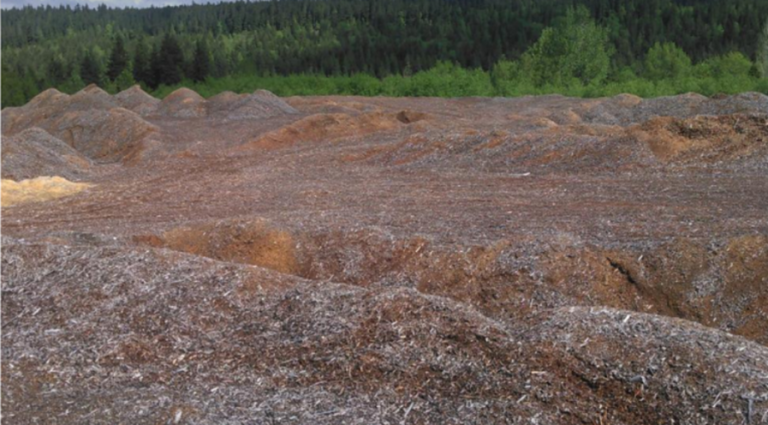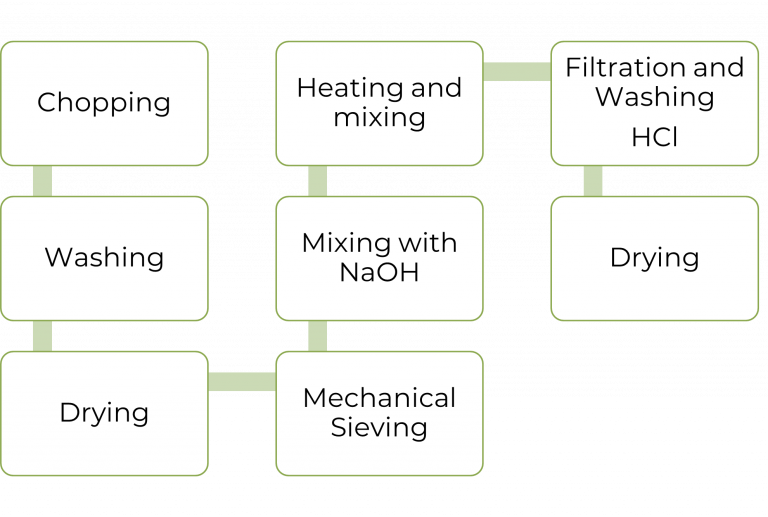Seham M. Ahmed | MEL Candidate | Dec 17, 2021.
Mentors: Kara Serenius and Floyd Wickie, Pacific North Coast Development Society, Kitselas Forest Products, Westland Resources and Thornhill Power & Utilities Corporation
Abstract
Wood residues generated from logging locations and sawmills in Terrace BC is a green and renewable biomass resource, however, these wood residues are currently being piled up and burnt on-site. These wood residues usually have a high moisture content > 50% making using them to generate energy a more complex process. This study explored different options for producing Renewable Natural Gas from these wood residues to determine their technical and economic feasibility.
After a pre-assessment, the study determined that Anaerobic co Digestion and Hydrothermal Gasification are more suitable for this type of biomass. The results showed that Hydrothermal Gasification produces more amounts of RNG than Anaerobic Digestion
Introduction
Terrace BC is situated in the Coast Mountains Resource District of FLNRO Northern BC. Presently, the surrounding logging operations, which consist of 128 locations, generate a combined decadent fibre at a rate of approximately 180,000m3 per year (MFLNRORD, n.d). In addition, the wood processing units in the area generate about 80.000 tons/yr. The current practice for managing the decadent fibre is to pile and burn on-site.
The energy storage market is growing; many other jurisdictions have already implemented local/regional and more significant scale energy storage initiatives to meet increasingly peaky loads from EV increases and climate extremes.
A group consisting of Pacific North Coast Development Society, Kitselas Forest Products, Westland Resources and Thornhill Power & Utilities Corporation is undertaking the preliminary economic assessment of a waste to energy facility that uses the wood residue resulting from the logging sites.
This project evaluated options for the use of wood residue for maximum value. Two biomass conversion technologies were considered to produce Renewable Natural Gas (RNG), Anaerobic co Digestion and Hydrothermal Gasification.

.
Objective
To evaluate the technical and economic feasibility of Anaerobic Digestion and Hydrothermal Gasification for the production of renewable natural gas from wood residues
Methodology
The project evaluated both the technical and economic aspects of the selected biomass conversion technologies
For the technical evaluation, the energy, mass balance approach was used to calculate the biogas and methane yields at each stage of the processes and to determine the energy requirements and the efficiency of the processes. For the economic evaluation, basic economic formulas to calculate the revenues vs cost were used
Results and Discussion
There are many options for converting the wood residues to value products, including Anaerobic Digestion, Gasification, and Pyrolysis. As the Wood residues have 50% moisture content, the pretreatment for gasification and pyrolysis includes moisture removal which requires significant amounts of energy.
The pretreatment process required for Anaerobic Digestion is illustrated in Figure 2. It involves the drying of WR at 105 C, then mixing it with Sodium Hydroxide, the WR is then dried again at 105 C, then it is filtered and washed with Hydrogen Chloride. This is a complex process, however, it improves the methane yield of the wood residues significantly. After treatment, the methane yield was calculated as 605 L/KG VS of pretreated wood residues.
It is important to know that this process is not yet commercialized and the values obtained for methane yield are from research papers.

For Hydrothermal Gasification, catalytic gasification was selected as it is the type that provides the highest methane yield. The catalyzer selected is an alumino-silica-supported nickel catalyst with, ∼10% (g/g) dry mass. This arrangement produces 0.3 KG methane for every 1 kg TS of wood residues.
References
1.John B. Grantham, Eldon M. Estep, John M. Pierovich, Harold Tarkow, “Energy and Raw Material Potentials of Wood Residue in the Pacific Coast States, A Summary of A Preliminary Feasibility Investigation”, USDA Forest Service General Technical Report PNW -18, 1974
2.Li, R.; Tan, W.; Zhao, X.; Dang, Q.; Song, Q.; Xi, B.; Zhang, X. Evaluation on the Methane Production Potential of Wood Waste Pretreated with NaOH and Co-Digested with Pig Manure. Catalysts 2019, 9, 539.
3.Youjun Lu, Liejin Guo, Ximin Zhang, Chengmeng Ji, “Hydrogen production by supercritical water gasification of biomass: Explore the way to maximum hydrogen yield and high carbon gasification efficiency”, International Journal of Hydrogen Energy, Volume 37, Issue 4, 2012, Pages 3177-3185, ISSN 0360-3199,
Contact
SEHAM M. AHMED
Email: sehamaboshorah@hotmail.com